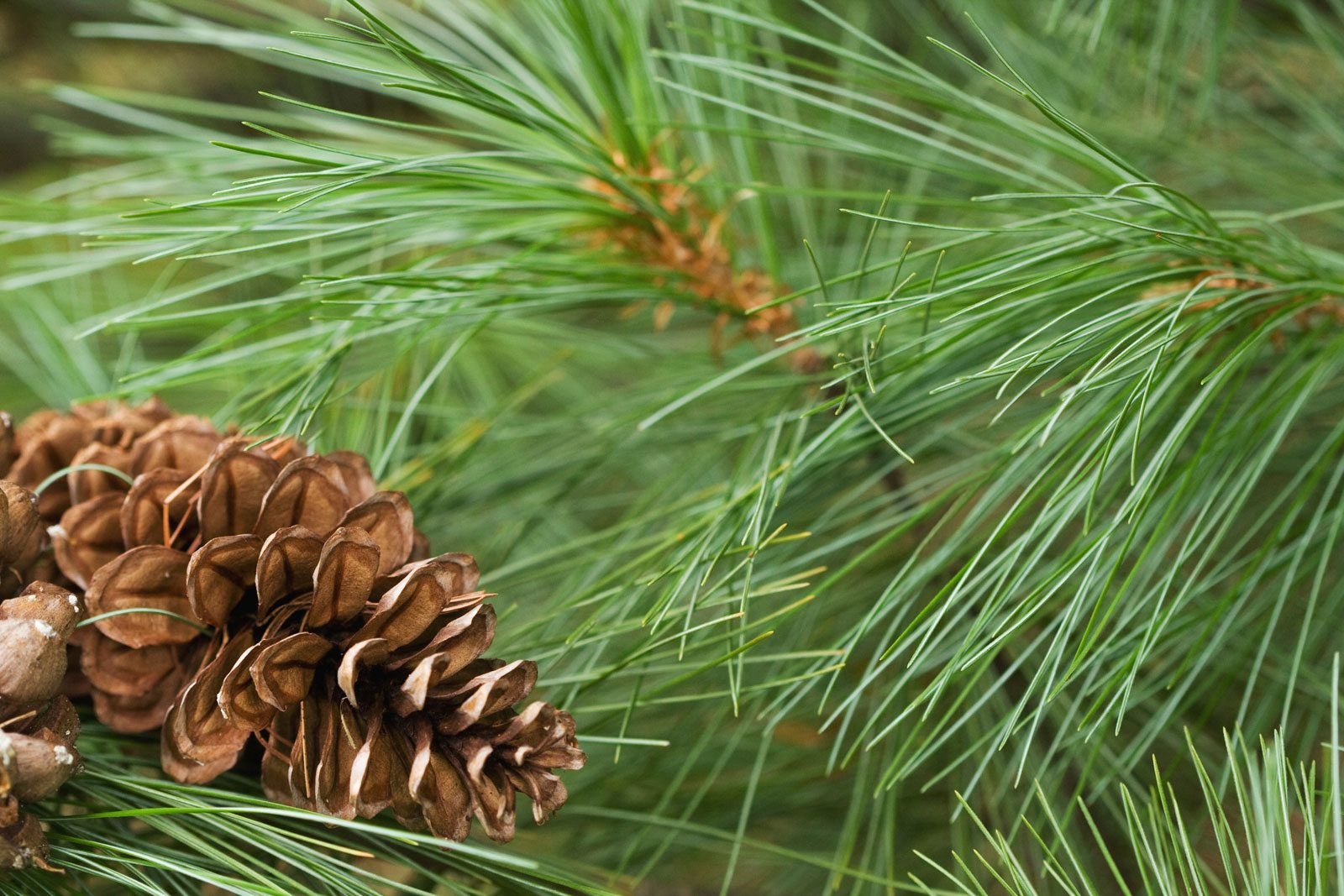White Pine Tree Information – Learn How To Plant A White Pine Tree


It’s easy to identify a white pine (Pinus strobus), but don’t look for white needles. You’ll be able to recognize these native trees because their bluish-green needles are attached to the branches in bundles of five. Gardeners living in USDA zones 5 through 7 are planting white pines as ornamental trees. The young trees grow rapidly in an appropriate site. Read on to learn how to plant a white pine tree.
White Pine Tree Information
White pines are lovely evergreens with graceful habits. The lush, 3- to 5-inch (7.5-12.5 cm.) needles make the tree look soft and attractive. White pine makes a fine specimen tree, but can also serve as a background plant, given its evergreen foliage. These trees grow in a pyramidal Christmas tree shape, with the tiered branches emerging at right angles from the central trunk.
How to Plant a White Pine Tree
Before you start planting white pines in the backyard, make sure you can offer the optimal growing conditions for this pine tree. The trees will not thrive in a poor location. You will need to give your white pines rich, moist, well-drained soil that is slightly acidic. Ideally, the site you choose for white pines should get full sun, but the species tolerates some shade. If you plant in an appropriate site, white pine tree care is not difficult. The size of the tree is an important piece of white pine tree information. Gardeners with small backyards should avoid planting white pines. The tree can grow to 80 feet (24 m.) tall with a 40 foot (12 m.) spread. Occasionally, white pines grow to 150 feet (45.5 m.) or more. If the sheer size of white pine trees is a problem, consider one of the smaller cultivars available in commerce. Both ‘Compacta’ and ‘Nana’ offer much smaller trees than the species tree.
Care of White Pine Trees
White pine tree care includes protecting the tree from conditions that will damage it. The species can be injured by road salt, winter wind, air pollution, and ice and snow. It is very susceptible to white pine blister rust, a disease that can kill the tree. Both gooseberry and wild currant bushes harbor rust. If you are planting white pines, eradicate these shrubs from the planting area.
Sign up for the Gardening Know How newsletter today and receive a free copy of our e-book "How to Grow Delicious Tomatoes".

Teo Spengler is a master gardener and a docent at the San Francisco Botanical Garden, where she hosts public tours. She has studied horticulture and written about nature, trees, plants, and gardening for more than two decades, following a career as an attorney and legal writer. Her extended family includes some 30 houseplants and hundreds of outdoor plants, including 250 trees, which are her main passion. Spengler currently splits her life between San Francisco and the French Basque Country, though she was raised in Alaska, giving her experience of gardening in a range of climates.